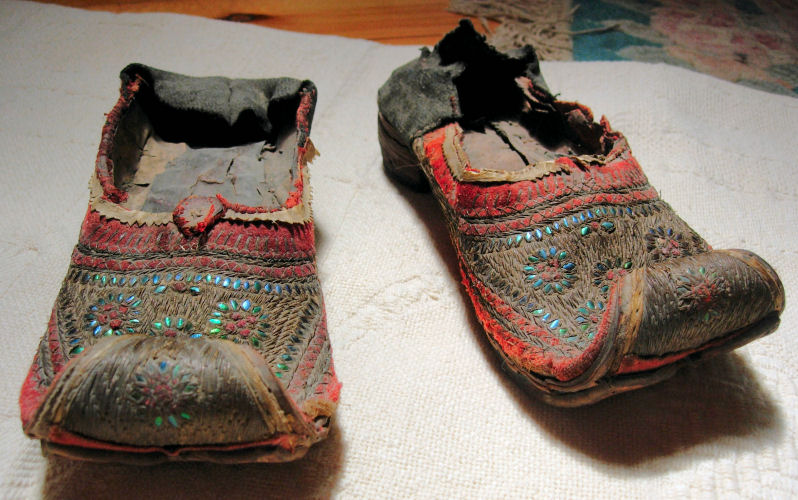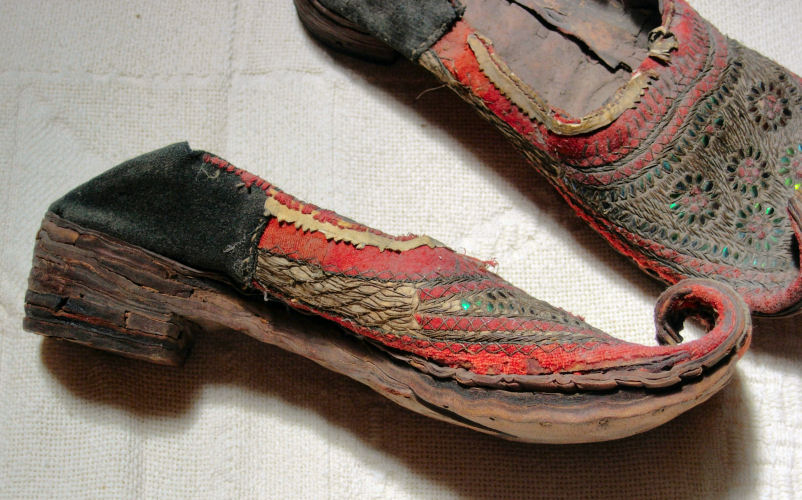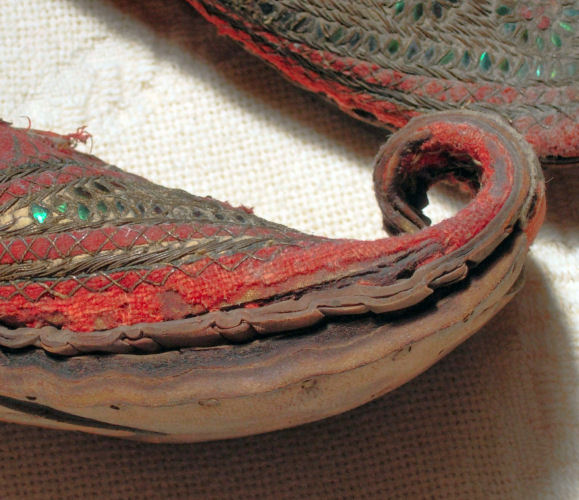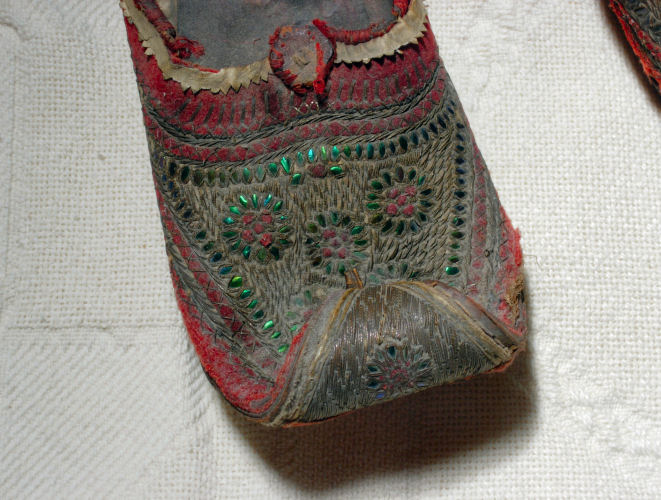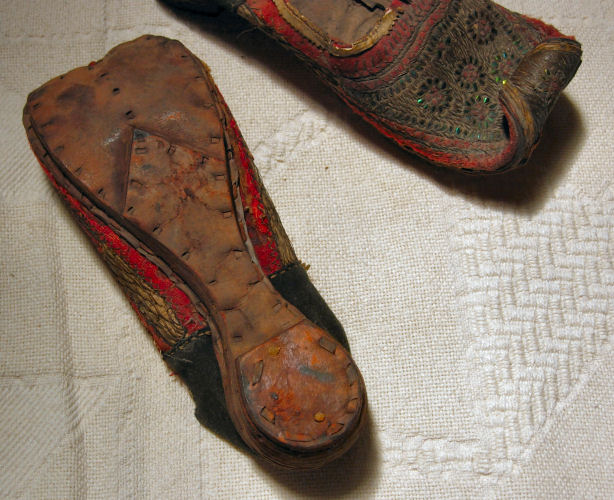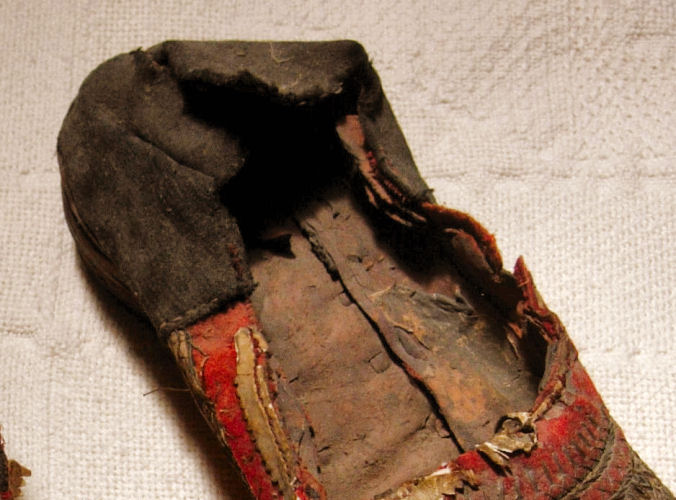

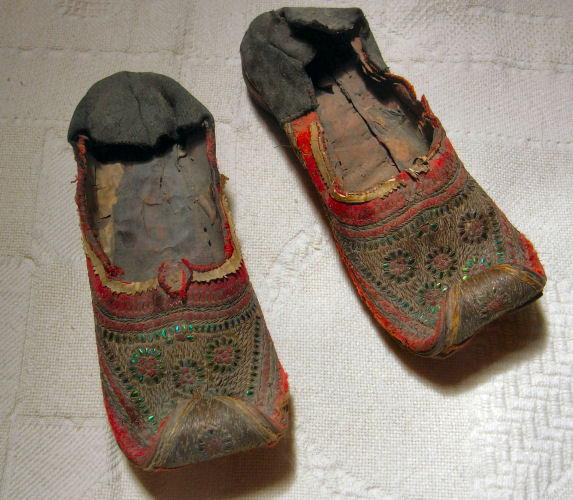
| The name Punjab is the name of a region in northwest India and bordering Pakistan. It was named by the Turkish Mughal empire in the 17th Century. The region, lying in the Indus Valley, was the site of one of the world's earliest civilizations and was conquered and dominated by various ancient empires, including Alexander's Greek Empire, through the ages. The region has historically been noted for its leather crafts. The pair of shoes exhibited here date to the 1800s, and are of a style known as jutti. Jutti were men's shoes consisting of leather uppers extravagantly ornamented with glass and cermaic beads, mirrors, brass nails and shells. The uppers were traditionally attached to the leather soles by cotton thread. Jutti are considered 'closed' shoes, meaning that the shoes have backs on them; mojari are similar footwear which have open backs, like sandals. Jutti and mojari were generally of the same construction and shape for both men and women, and in fact, both shoes of a single pair tended to be shaped the same without distinction of left or right. But jutti for men had a unique toe design, being extended (sometimes into a point) and curled back upon the vamp (i.e.the part covering the metatarsal bones of the foot). The curled toes were intended to mimic the ends of a man's curled moustache. This pair of jutti had previously been exhibited in the Crawford's Museum at Breezewood, Pennsylvania. Prior to the closing of that museum, and the selling of its exhibitions, this pair of jutti were attributed to the Eighteenth Century. The materials that make up the decoration on the uppers appear to be more recent. Unfortunately, since jutti have been produced in the same manner for hundreds of years, an exact dating of this pair is very difficult. |
